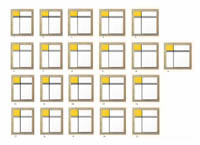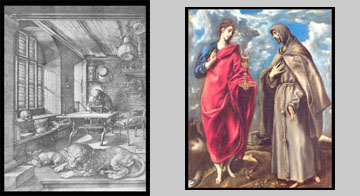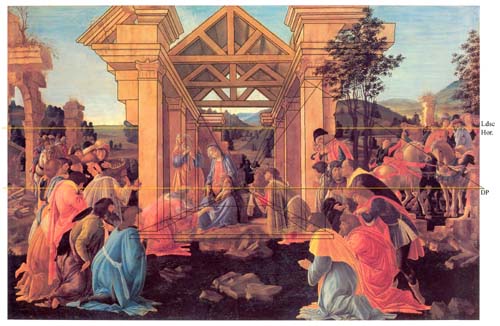
John H. Brown, Associate Professor (emeritus), Department of Philosophy, University of Maryland, College Park, MD 20742. Tel. 301-405-5702. Email. jhbrown@umd.edu
1. Courses
PHIL 230 Philosophy of the Arts

PHIL 332 Philosophy of Beauty, Syllabus
PHIL 332 Philosophy of Beauty, Introduction and Part I
PHIL 332 Philosophy of Beauty, Part II
PHIL 332 Philosophy of Beauty, Part III
PHIL 332 Philosophy of Beauty IV
PHIL 332 Notes on Scruton, Beauty: A Very Short Introduction
2. Articles
Deep vs. Shallow accounts of Beauty (Aesthetic Value)
This article updates in a fundamental way the theory of beauty that the earlier articles try to set forward. It has been presented to the Canadian Society for Aesthetics at their online meeting June 13th, 2021.
Reinterpreting beautiful for me, a presentation to the Canadian Society for Aesthetics at its annual meeting in Vancouver, June, 2019.
The expression “beautiful for me” has been derided as conceptually confused because it equivocates between personal subjectivism and some inchoate sort of relativized or even particularized aesthetic realism. Those who use it are accused of hypocrisy, of not having the guts to espouse subjectivism or bite the bullet of an honest aesthetic realism. At times claims have been put forward for a view called objective relativism, but all such proposals are suspect of the same double dealing. No viable explanation of the ontology of such a view has been produced. Yet the attraction of the expression has remained high. Obviously there is something in this muddle to be explained.
The present paper seeks to identify an aesthetically valid sense for the locution. The key is that the object called beautiful (the nominal subject of interest) is not what the respondent thinks. The first task of this paper to identify the true object. The second is to follow out the consequences of the reidentification, which helps to explain why it is so difficult to reach agreement about what is and is not beautiful.
Functional Beauty of Organisms
A study of functional beauty in natural organisms: what is functional beauty? How is it related to the beauty of appearance, which is typically what is referred to when we speak of a beautiful natural organism?
A paper on serious aesthetic deficiencies in the natural world including organisms, modes of behavior, geophysical phenomena and their effect on the biotic world, delivered at the Canadian Society for Aesthetics in May 2010.
The Illusion in the Picture, image of Saenredam's Grote Kirk at Haarlem:

A much revised and expanded version of a paper, "The Illusions in the Picture, delivered to the American Society for Aesthetics at its 2007 annual meeting, which in its revised form is in press for a collection of essays on pictorial representation. 
In this paper I argue that there is a sense in which what is "seen-in" a picture is typically different from what is correctly taken to be the subject of the picture. This contention expands upon Robert Hopkins' "Separation account" in his 1998 book, Picture, Image and Experience. If I am right, a number of important modifications should be made in the theory of depiction.
Responsive Cohesion and the Value of Wild Nature
This paper was presented to the Canadian Society for Aesthetics in June 2008. It explores the problems facing any serious attempt to develop the concept of environmental order aesthetics. Warwick Fox's concept of responsive cohesion as the primary value of things, put forward in his 2006 book, A General Theory of Value, is examined as a promising central concept for environmental order aesthetics, perhaps the most plausible so far found. But enough questions emerge about the application of the concept to leave its viability in a state of constructive uncertainty.
Connoisseurship: Conceptual and Epistemological Fundamentals
This paper is a corrected version of an essay published in Perspectives on Connoisseurship of Chinese Painting, Jason Kuo, ed., 2008 (Washington, D.C.: New Academia Publishing).
The classic works of Piet Mondrian are widely celebrated for their dynamic equilibrium. The art-historical literature on Mondrian has accepted Mondrian's frequently avowed aspiration to achieve a vital equilibrium holding between all contrasts within his rather spare Neo-Plastic parameters. More than any other oeuvre of comparable size his seems an ideal field within which to test human capacities to distinguish subtle differences and degrees of balance/ imbalance. Further, the simplicity of his facture makes his works ideal subjects of experimentation by way of ordered variations, which can now be produced at will by digital transformation. The first results of selective variations tend to cast doubt on the fineness of equilibrium in the works and in the human capacity to respond differentially to changes in structure, challenging the received wisdom about Mondrian and more generally about aesthetic properties. But minute consideration of more systematically graduated sets of variations offers hope that in many cases surprisingly fine discriminations of equilibrium can be made in at least some of the dimensions basic to Mondrian's art. The main outcome of the investigation using digitized images is to set an agenda for more patient and systematic study of aesthetic properties than has hitherto been feasible – or been thought needful.

Uniformity and Variety Revisited
This is a companion paper to the one following, overlapping with it but including
different examples and making various different points.
Uniformity, Variety and the Beauty of Polygons
Eighteenth Century British aestheticians make much of the formula: uniformity
amidst variety. These terms keep company with others such as "regularity,"
"simplicity," "complexity," "intricacy," "number,"
"proportion," "order" and "congruity." "Beauty,"
says Gerard, "belongs to objects possessed of uniformity, variety and proportion.
Each of these qualities pleases in some degree; but all of them united give
exquisite satisfaction." (Gerard 29) So stated it appears that beauty -
intrinsic beauty -- depends on purely objective properties. On the other hand
we also find a quite different, emphatically psychological explanation of what
we count as beautiful. My purpose is to explore the concepts cited above, to
test their application to a set of examples, and to consider how the tension
between the two principal beauty-making factors may be resolved.

Exploring Non-regular Polygons
This set of studies seeks to extend the methods developed in �Uniformity, Variety and the Beauty of Polygons� (see the listing on this website) to non-regular polygons. The aim is to discover a viable way to rank the systemic beauty of such figures on the basis of the multiplicity of uniformities they contain. 
Digital Technology in the Service of Aesthetic Analysis and Theory
Students in PHIL 230 should note that the second half of this paper is relevant to the course because it shows how the spatial anomalies in Cezanne's still life paintings contribute to what Bell would refer to as their significant form.

This paper demonstrates some of the capabilities of digital technology in unraveling the complexities of visual designs, and then to suggest some advances in aesthetic theory that I think this technology may make possible. The first aim occupies most of the paper, and I think that the showing is reasonably convincing. The second is pursued much more briefly and in a decidedly tentative and speculative vein. Here I cannot expect my remarks to convince, only to make the possibility of technology assisting theory inviting enough to warrant serious attention being given to it.

The traditional fine-grained discussions of Giotto's epoch-making frescoes are full of aesthetic observations and judgments. Those of John White, Alistair Smart, and James Stubblewine serve as examples. Yet an aesthetically engaged reader whose critical faculties have been honed by philosophical debate can't help but notice omissions, obscurities, and questionable inferences. While admiring the subtlety and insightfulness of these accounts with respect to selected features, such a reader wishes for the attribution of aesthetic properties to the works to be sharpened, extended over more features, and placed on firmer ground. In the following paper I point to problematic features awaiting this kind of treatment.
The Role of Monocular Viewing in Pictorial Appreciation

The thesis I wish to defend in this paper is that monocular viewing from the privileged point implied by the design itself has a vital role to play in the understanding and appreciation of perspectival pictures, and that it should by no means be regarded as idle or abnormal. In aesthetic theory and practice the role of monocular viewing of pictures has been almost totally neglected, or perhaps one should say suppressed, for several centuries in spite of clear evidence of its relevance. I argue that there are compelling reasons why we should rescue monocular viewing from oblivion and integrate it into our viewing practice.
Getting Deeper into Pictures via Digital Transformation: A Tale of Two Horizons

Digital technology enables us to transform reproductions of originals in a wide variety of ways retaining the full color and texture of the source images. One use of this technique is to reveal the space in pictures more fully and comprehensibly than is possible by direct scrutiny, however exacting, or even by constructing diagrams. Another is to discover the advantages and disadvantages of the options open to the painter when engaged on the work, so as to set what the artist chose to do against that background of alternative possibilities. Transforms, as I shall call them, enable us to see directly what hitherto we have only been able dimly to imagine. Such direct visual access enables us to draw reasonable inferences about the artist's motivation and to appraise more realistically the artist's accomplishment. This paper shows the enlightenment that can be produced by employing digital transforms in relation to the problems confronting Botticelli in theAdoration of the Magi (National Gallery, Washington, D.C.).
Aesthetic properties as value-justifying
This paper was presented to the Eastern Division of the American Society of Aesthetics in April 2005. It represents my best thoughts about the difficult problem of aesthetic properties. In particular I concern myself with descriptive aesthetic properties: what they are, how they can be known, why they are enjoyable (or if negative, not enjoyable), and how they help justify aesthetic assessments.